I do CrossFit and continuously build up hand calluses from weightlifting. During high-rep bodyweight exercises, such as pull-ups and toes-to-bar, those calluses increase the risk of blisters and skin tears, and I end up with ripped hands that take days to heal and make showers an unpleasant experience.
To reduce the chance of callus formation (and thus, skin tears), I have experimented with Barehand Gloves and gymnastic grips from Bear Komplex to find out which workout gloves work better.
Continue reading to learn more and get answers to the following questions:
- Why do calluses form?
- How can you get rid of calluses?
- How can you treat ripped hands and torn skin?
- What are the best hand grips and CrossFit gloves?
Product Comparison
| Barehand Gloves | Bear KompleX Grips | Chalk | Tape | Workout Gloves | |
| Prevents tears | ★★★ | ★★★ | ★★☆ | ★★☆ | ★★★ |
| Prevents calluses | ✓ | ✓ | ✘︎ | ✓ | ✓ |
| Reliability | ★★★ | ★★★ | ★☆☆ | ★☆☆ | ★★★ |
| Grip support | ✓ | ✘︎ | ✓ | ✓ | ✘︎ |
| Improves form | ✓ | ✘︎ | ✘︎ | ✘︎ | ✘︎ |
| Comfort | ★★★ | ★★☆ | ★★★ | ★★★ | ★☆☆ |
Why Do Calluses Form?
Calluses form when the outer layer of your skin becomes denser due to pressure or friction. During weightlifting, the barbell and the extra weights that you use put a lot of pressure on your skin, thus enabling the formation of calluses.
Additionally, friction is the likely cause of calluses when you do pull-ups or toes-to-bar using a kipping or butterfly motion. I have also noticed that I get calluses and skin tears when performing kettlebell (KB) swings.
I would not have expected KB swings to cause skin damage, but I guess when I get exhausted my grip strength weakens and the KB starts to rotate as I swing it up and down. Plus, my hands get sweaty, which increases the friction between the KB’s handle and my skin. That’s all it takes for the skin to tear.
Why Does Skin Tear?
Skin can tear because of friction, and calluses further increase the likelihood of that happening by increasing the friction between the barbell and your hand. Often, a tear starts with a callus, but it doesn’t have to. I have torn my skin doing kipping chest-to-bar pull-ups without pre-existing calluses.
Using high-quality workout gloves — like those offered by Barehand and Bear Komplex — can significantly reduce blisters, calluses and painful skin tears.
Sweaty skin tears more easily than dry skin, which is why many athletes use chalk to keep their hands dry. Unfortunately, if there’s enough friction, like when you do 40+ kipping or butterfly pull-ups, you will likely tear skin regardless of the amount of chalk you use. As a result, you need a barrier between the bar and your skin, such as tape, grips or fitness gloves.
I have also learned that it makes a difference how tightly you hold the bar when lifting heavy weights. I tend to have an unnecessary “grip of death,” which increases the risk of wear and tear on my hands, regardless of whether I wear any kind of hand protection. So I have learned to loosen my grip.
How Can You Prevent Calluses and Skin Tears?
The best way to reduce the formation of blisters and calluses is to reduce or redirect pressure and friction. Below are the methods that I’ve tried during weight training, including my opinion on their effectiveness:
- Barehand gloves
- Bear KompleX grips
- Workout gloves
- Tape
- Chalk
Let’s take a closer look at each option and its pros and cons, starting with Barehand gloves, which have worked well — especially for low-rep exercises and weight lifting.
1. Barehand Gloves
- Incredibly comfortable and thin gloves
- Allow for almost direct contact with the bar(bell)
- Effective against calluses and skin tears
- Allow your skin to breath
- Only 1.35 mm thick and 7 grams
- They help to improve your form and grip
- Require the occasional readjustment
- Limited lifetime (depending on [ab]use)
I just recently discovered RAWW Sportsgear, the makers of RAWW Barehand gloves, after having suffered from ripped palms for almost a year of doing CrossFit. What I noticed immediately was how thin and comfortable the material was.
Their ergonomic design provides a comfortable natural grip. As a result, during training, I barely feel like I’m wearing gloves.
After having used them a few dozen times during CrossFit training, I have to admit that while the Barehand gloves are not perfect, they are the most comfortable solution, while offering reasonably good protection against skin tears.
Hand Protection
What I like most about Barehand gloves is their ability to protect my skin while not pinching my fingers as other grips and fitness gloves do. I guess that’s because of the soft yet durable material RAWW chose for its gloves.
The two-layer construction virtually eliminates friction between the glove and your skin. In other words, the inner layer of the gloves sticks to your skin, and the outer layer sticks to the bar, thus only allowing for friction between the two layers of the gloves. That’s ingenious because it protects both your skin and the gloves from the rough surface of the exercise equipment.
Grip and Feel
A good grip — especially when lifting heavy weights — requires close contact with the bar. That’s why my grip is the strongest when my skin is in direct contact with the bar. It’s also why traditional weight lifting gloves, especially the ones with neoprene or silicone padding, tend to weaken my grip. Barehand gloves are only 1.3 mm (0.053 inches) thick, and thus don’t interfere with gripping the bar.
During many weight lifting routines, such as front squats or push presses, I tend to allow the bar to roll towards my fingers, thus putting unnecessary pressure on my wrist.
Barehand gloves help me to improve my form by keeping the bar closer to my wrist during such lifting exercises. To leverage that feature, grab the end of the glove with your fingers to create a wrinkle (as shown in the photo below) before getting on the bar.
The wrinkle prevents the bar from rolling towards your fingers and helps prevent wrist injuries.
Unfortunately, I have occasionally triggered that feature during pull-ups. When I jump on the pull-up bar and grip the bar too close to my wrist, the pair of gloves tend to wrinkle like in the photo above. The good news is that it’s not uncomfortable, and the gloves don’t come off — but I sometimes have to pull back on the gloves during sets for a proper fit. Unlike when the tape starts peeling off, this doesn’t disrupt your workout.
Review of RAWW Barehand Gloves
Out of all the methods I’ve tried, Barehand gloves have offered the best mix of comfort and protection. This pair of gloves shines during low-rep exercises (e.g., heavy lifts) to prevent skin tears and reduce the formation of calluses.
It’s also worth mentioning that it takes 5 to 10 workouts for the gloves to “break in” and perform optimally. I broke my Barehand gloves in during Murph, a legendary CrossFit workout that includes, among other things, 100 pull-ups. I’m happy to report that the Barehand gloves delivered on their promise, and I couldn’t be happier with them.
Important: Don’t use chalk in combination with Barehand gloves, as it dries out the polyurethane material in the product.
Also, take the time to break in your gloves properly. Based on how much abuse the gloves have to endure, their life expectancy is between 3 months and 1.5 years, according to RAWW. I’ve had mine for a few months, and they’re already showing signs of wear.
Recently, I had the opportunity to work out with my co-worker at Forever Young CrossFit in Orlando, Florida, during a business trip. She wore WONSROOYI Cross Training Gloves (Amazon), which looked similar to my Barehand gloves, and she liked them. While I don’t have any experience with these CrossFit gloves, I figured I would mention them as a less-expensive alternative.
2. Bear KompleX Hand Grips
- Effective against calluses and skin tears
- Many pro athletes use them
- Allow skin to breathe
- Durable — will last for a long time
- Some athletes find them uncomfortable
When I started doing CrossFit, one of the first pieces of equipment I purchased was Bear KompleX three-hole CrossFit grips. I saw other athletes in my box using similar hand grips and figured they’d be perfect for hand protection.
While those gymnastic grips did an excellent job protecting my palms, they were a bit uncomfortable to wear at first. I assume the reason for that is the leather needs to be broken in.
The two issues I initially had with these hand grips were the fit and the fact that they wrinkled when I gripped the bar; that wrinkle pinched my fingers. As a result, I often ended up taking the grips off during a workout, thus exposing my hands to tears.
I asked around in my box, and while some athletes shared my complaints about these hand grips, others seemed to be happy with them. I have also noticed that many professional CrossFitters use grips like these for competition.
That tells me that they’re reliable and effective. Regarding their comfort, some athletes either don’t mind that wrinkle, are less sensitive, or maybe use tape to prevent the crease from forming. I couldn’t get them to work, so I stopped using them and went back to tape.
Feedback from Bear KompleX: One tip that may personally help you with your comfort issues is to wear the grips a little higher on the fingers. I know you said that you weren’t a big fan of the fold but doing this helps to create that dowel fold which can help “lock” you onto the bar. Try wearing the finger holes around your middle knuckle joint so that when you grab the bar you get a small fold in the finger area versus the palm. It might take a workout or two to get used to but this is a very popular technique among the high-level athletes.
A few weeks ago, I decided to give my Bear KompleX grips another try on a WOD with high rep counts. To my surprise, I managed to get the fit and comfort issues under control. So now I’m using my Barehand Gloves for lower rep count WODs and for lifting weights, and the Bear grips for high rep count pull-ups and toes-to-bar.
But guess what? I still occasionally tear my skin, despite wearing gloves. As I mentioned above, it’s likely due to my tight grip on the weight, which I have to learn to loosen a bit (especially during pull-ups). The positive side effect of doing that is that I’ll be able to hang on to the bar for longer before my grip starts to fatigue.
3. Chalk
- Reduces the chance of skin tears
- Effective for some movements
- Usually provided for free by your gym/box
- Keeps hands dry if applied frequently
- Does not prevent calluses
- Unreliable for exercises involving rotation
- Has to be repeatedly applied
In my experience, chalk can help get a good grip on the bar and reduce the chance of your skin tearing due to friction caused by sweaty palms. But it has not helped me much to reduce callus formation. Remember, calluses form due to pressure and chalk cannot prevent that.
On the bright side, chalk can be useful in reducing skin tears by keeping your hands dry. Unfortunately, chalk only works if you reapply it as soon as it rubs off. And therein lies the problem — there’s no long-lasting durability. If you’re in the middle of a workout, you may not be willing to take a break and reapply. Other times, you may only notice that the chalk has rubbed off your skin after it’s started tearing.
Exercises where I think chalk is effective against skin tears include:
- Straight pull-ups
- Barbell lifts
- Ring Rows
What all the activities above have in common is a lack of a rotating motion (as far as the barbell is concerned) that creates friction. I try not to rely on chalk for any other movements, including:
- Kipping or butterfly pull-ups
- Kipping toes to bar
- Muscle-ups
- Rope climbing
- Kettlebell swings
Besides applying chalk on your bare skin, it’s also useful in combination with certain types of gym gloves to increase friction and thus improve grip strength. For example, many athletes use chalk with leather grips to counter the smooth surface of the leather.
Working out without chalk sucks to be perfectly honest, especially for pull-ups and similar bodyweight exercises. That’s why I’m glad I stumbled across Char Chalk, the first and only activated charcoal chalk.
It’s a wet-to-dry chalk that comes in a tub and you can apply it to your skin without making a mess. I’ve tried Char Chalk over the past week and I’m happy to report that it works as well as regular chalk — just without the mess. The latter is what convinced the owner of my box to allow me using it.
Unfortunately, Char Chalk doesn’t appear to be available anymore and it looks like the company might have gone out of business.
4. Athletic Tape
- Effective against calluses and tears
- Can be expensive in the long run
- Unreliable because it tends to peel off
When I realized that chalk is not an ideal solution, I started taping my hands and wrists before particular strength training workouts involving lifting that I knew had the potential to ruin my hands. So I bought a six-pack of athletic tape on Amazon, and I made sure to always keep a roll in my gym bag.
The advantage of tape is that it’s thick enough to help prevent both calluses and blisters (it also provides a little bit of wrist support). Here’s how you can use athletic tape to protect your hands before an intense workout, such as pull-ups:
- Spread your fingers to avoid wrapping the tape too tightly and restricting your hand/finger range of motion.
- Start on top of your index finger and continue taping along the crease line where your fingers meet your hand.
- With each round, tape a bit closer towards the middle of your hand.
- Stop right above your thumb line.
The good news is that tape is an incredibly useful tool for preventing calluses and tears while it’s on. Unfortunately, it often doesn’t stay in place and (partially) peels off in the middle of a workout. I have successfully used tape during shorter CrossFit workouts that I could finish before the tape peeled off enough to expose my skin, but I have also done longer workouts where the tape didn’t hold up — I subsequently tore my skin during the second half of the exercise.
I have noticed that tape works better for exercises where I have time to grip the bar, barbell, or free weights properly. If the clock is running and I’m in a rush and have to adjust my grip on the bar, tape tends to be less effective.
Here are the movements for which tape works well:
- Strict pull-ups or toe-to-bar
- Short sets of kipping and butterfly pull-ups with a proper grip
- Ring rowing
- Short sets of kipping toe-to-bar with a proper grip
- Barbell lifts
- Kettlebell swings
Tape tends to be less reliable for the following movements:
- Long sets of kipping and butterfly pull-ups while I’m on the clock
- Long sets of kipping toe-to-bar while I’m on the clock
How to Care for a Ripped Hand
I have ripped my hands so many times that I’ve had plenty of opportunities to try different ways to expedite the healing process. The most effective method that I have found is:
- Cut away the dead skin
- Optionally: disinfect with hydrogen peroxide
- Leave wound exposed to air for quicker healing
If you suspect that you may have infected your wound, you may want to apply an antiseptic. The advantage of hydrogen peroxide is that it doesn’t burn when poured on an open wound.
After that, I typically let the wound heal while being exposed to air. It takes about 24 hours before a new, albeit thin, layer of skin forms to protect the underlying flesh. Covering the wound with a Band-Aid often elongates the healing process, which is why I try to avoid it.
Regarding showering or washing hands, I have found that the exposure to warm water burns for the first few seconds and then goes away. But if you’re sensitive to pain, cover your ripped hand with a Ziplock bag before jumping into the shower.
As the hand heals, keep cutting away any dead skin around the wound using a cuticle trimmer. Leaving on the dead skin is another great way to rip again, because dead skin creates friction.
Alternatively to letting your rips heal exposed to air, you could also use a liquid Band-Aid spray, like the one from New-Skin. I tried it once and, frankly, it hurts more than it helps.
How to Remove Calluses
Getting rid of calluses is all about removing the dense and dead skin. Depending on how pronounced your calluses are, there are different methods to treat them.
I have made callus treatment part of my shower routine by gently using a foot file to remove the hard skin from the palm of my hands. The foot rasp I have is relatively coarse because it’s meant for feet, so I have to be careful not to inflict damage to the surrounding skin on my hands. Occasionally, I also use the rough side of a nail file to treat smaller calluses.
If I suffer from thick calluses, I use my cuticle trimmer to cut into it. Just make sure that you don’t cut into the healthy skin because that’ll hurt and would be counterproductive.
Frequently Asked Questions
You want your gym gloves or wrist wraps to be as tight as possible without feeling uncomfortable or restricting blood flow. Keep in mind that the less wiggle room between your skin and the bar, the better your grip is.
The best course of action is to not let them get stinky in the first place. A bad smell is usually a sign of bacteria that grows on moist surfaces. So, I recommend letting your gloves dry in the open after a workout; avoid putting them into your gym bag before they’ve fully dried.
If they already smell, you can hand wash them (if the material permits it) in warm water and mild detergent or soap.
It depends on your goals! If you want to build grip strength, I recommend not using heavy duty gloves. I typically use Barehand gloves for weight lifting. However, if you’re trying to beat your personal records, there’s nothing wrong with wearing gloves that might give you a better grip on the bar.
As I mentioned above, the best way to avoid blisters and calluses is to reduce friction and pressure by wearing gloves.
Most weightlifting gloves don’t cover the whole fingers to give you a better grip on the bar, to increase flexibility, and to give you the option of using a hook-grip. The latter would be almost impossible if your thumb and fingers were covered.
There are certainly disadvantages to using gloves, grips or wraps. Gloves can impair your grip because they’re between your skin and the bar. They can also reduce your ability to build grip strength — especially if they’re thick and inflexible. That’s why I recommend using grips that get your skin as close as possible to the bar, such as Barehand gloves for lifting or Bear Grips for rotational movements (such as butterfly pull-ups or toes-to-bar).
Barehand Gloves vs. Bear KompleX Grips
Everybody’s skin is different, and some athletes rip easier than others. I have known some folks who claim they don’t rip anymore, regardless of what they do. Unfortunately, I’m not one of them, and for me, the best way to prevent skin tears and hand calluses is to reduce or redirect pressure and friction.
All of the methods I mentioned above have pros and cons, but Barehand Gloves and Bear KompleX hand grips have worked best for me. Barehand Gloves are incredibly comfortable while doing a reasonable job of protecting my skin. Bear KompleX hand grips are slightly less comfortable but offer better protection. Both help me get and keep a great grip, while neither have annoying pads that get in the way of my workout. I keep a pair of each in my gym bag.
But now I want to hear from you! How do you prevent your hands from ripping? Do you use a particular brand or type of weightlifting gloves?
Also, I didn’t talk about women’s workout gloves in this article, so if you know of great gloves for women, let me know by leaving a comment below!

Michael Kummer is a healthy living enthusiast and CrossFit athlete whose goal is to help people achieve optimal health by bridging the gap between ancestral living and the demands of modern society.

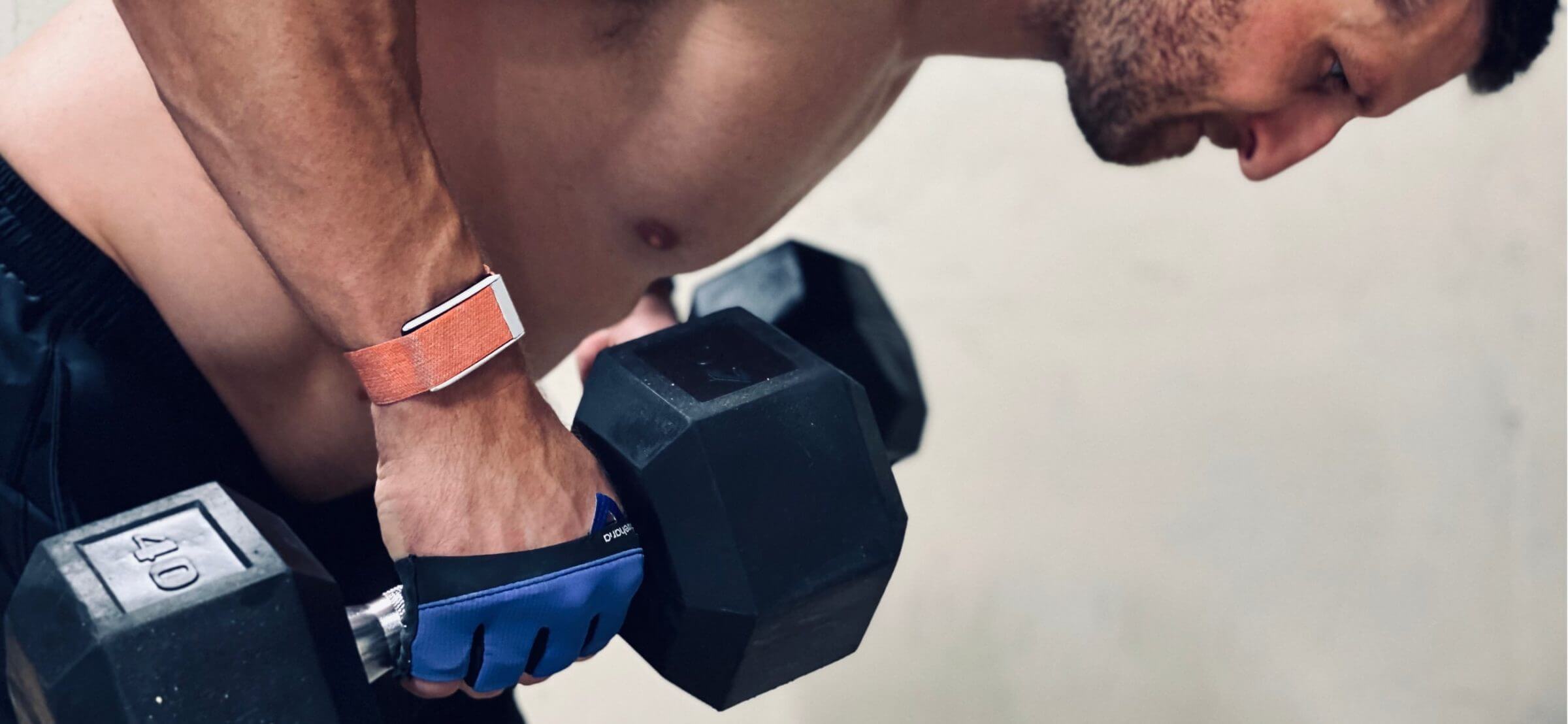
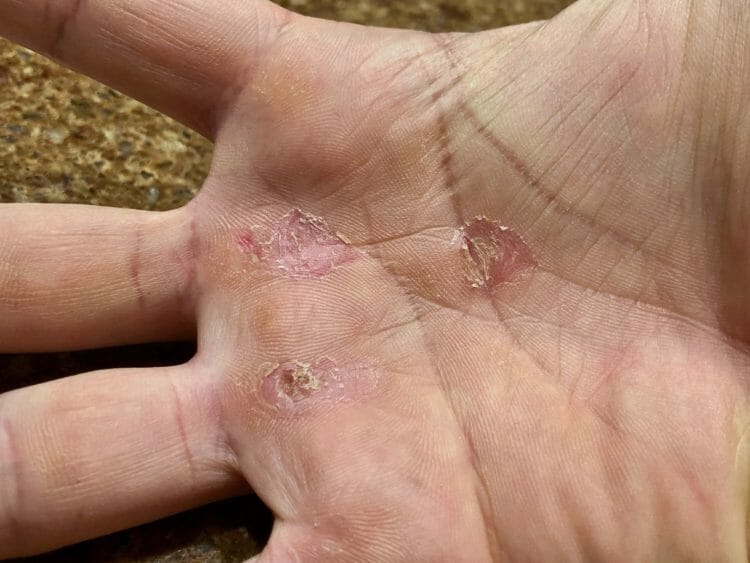
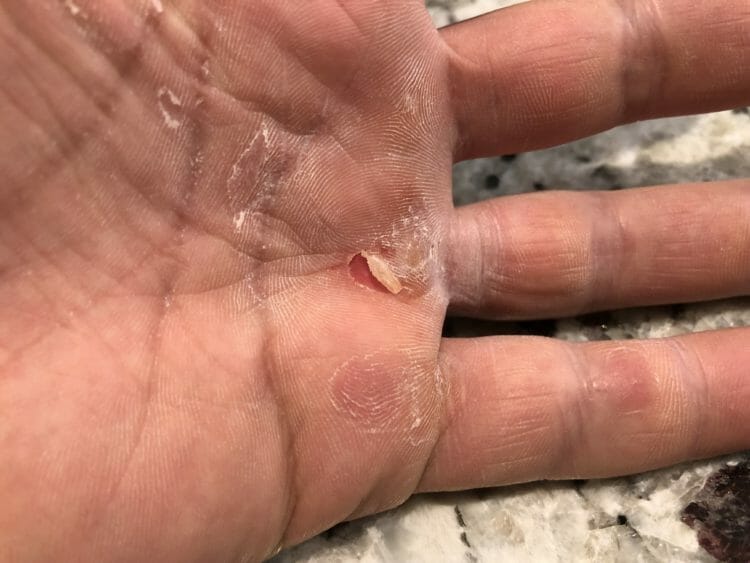
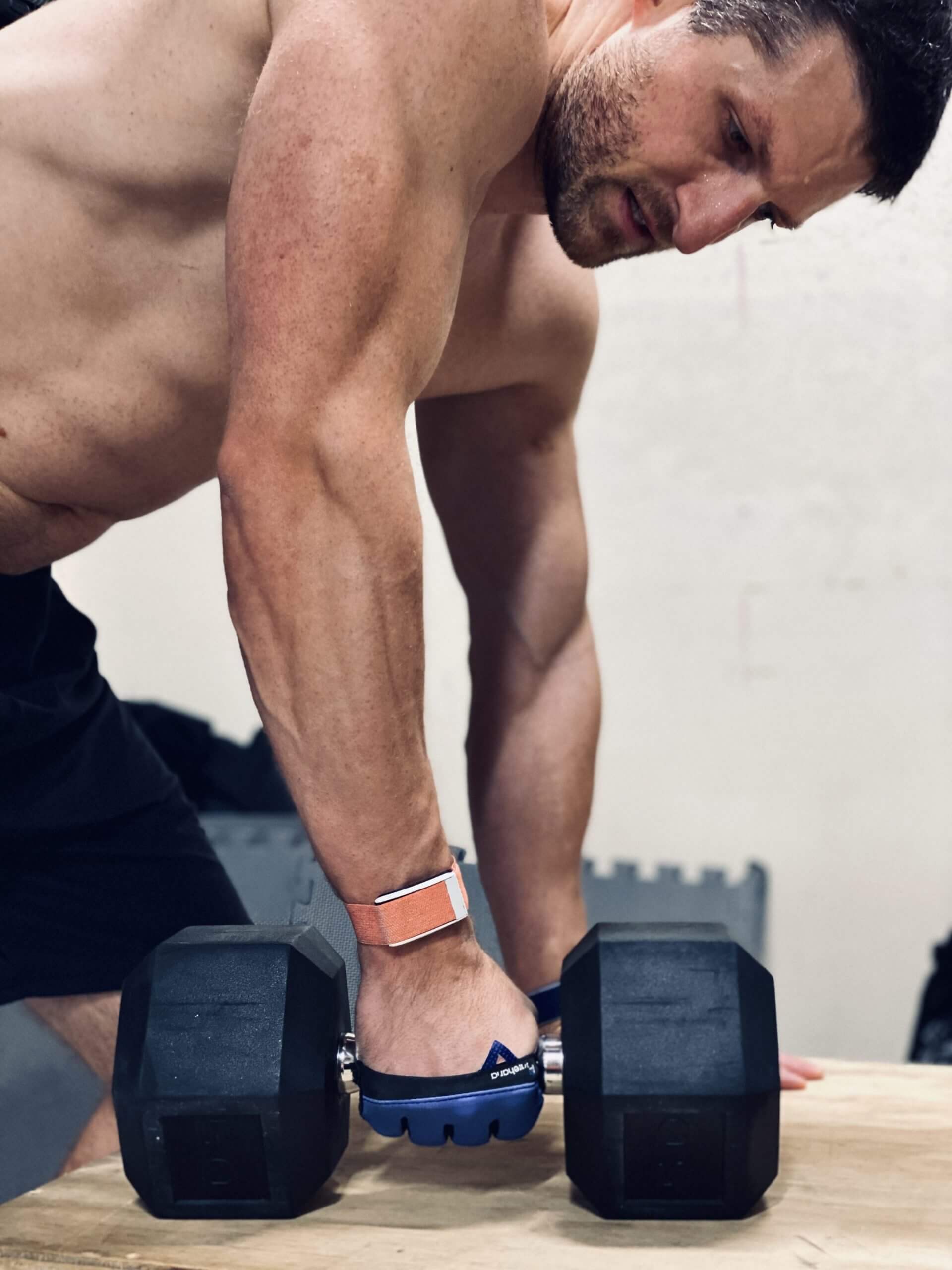
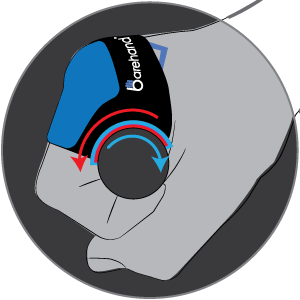
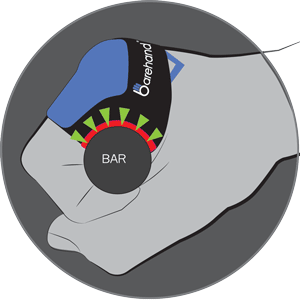
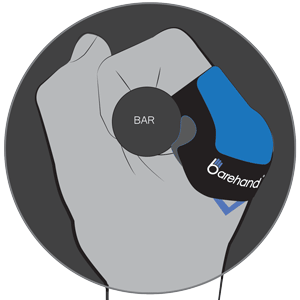
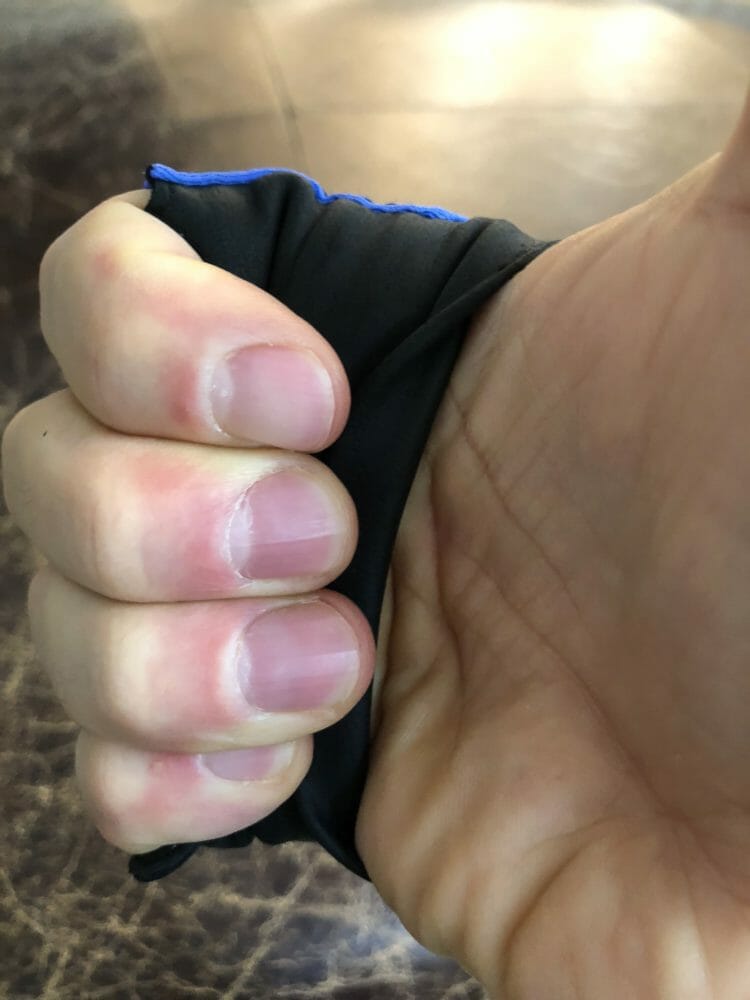
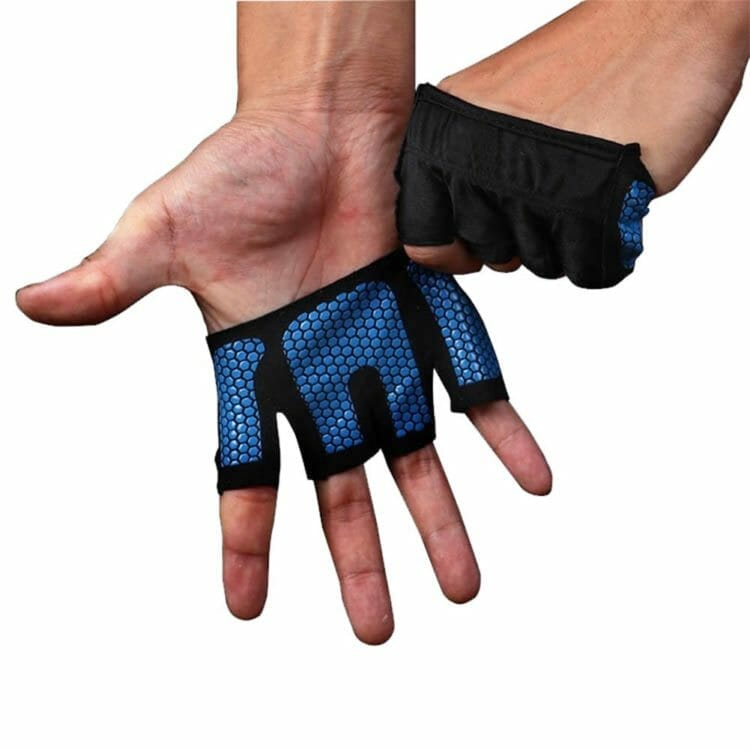
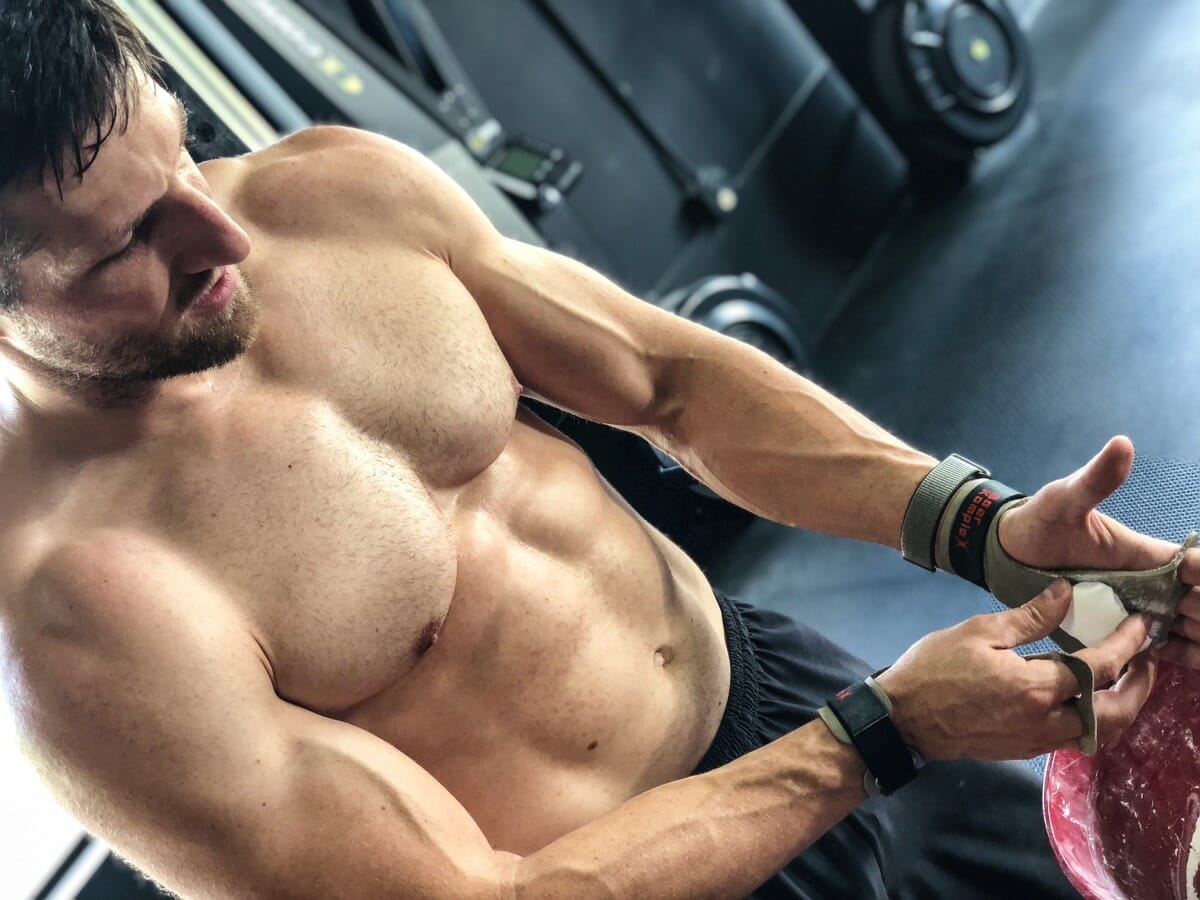
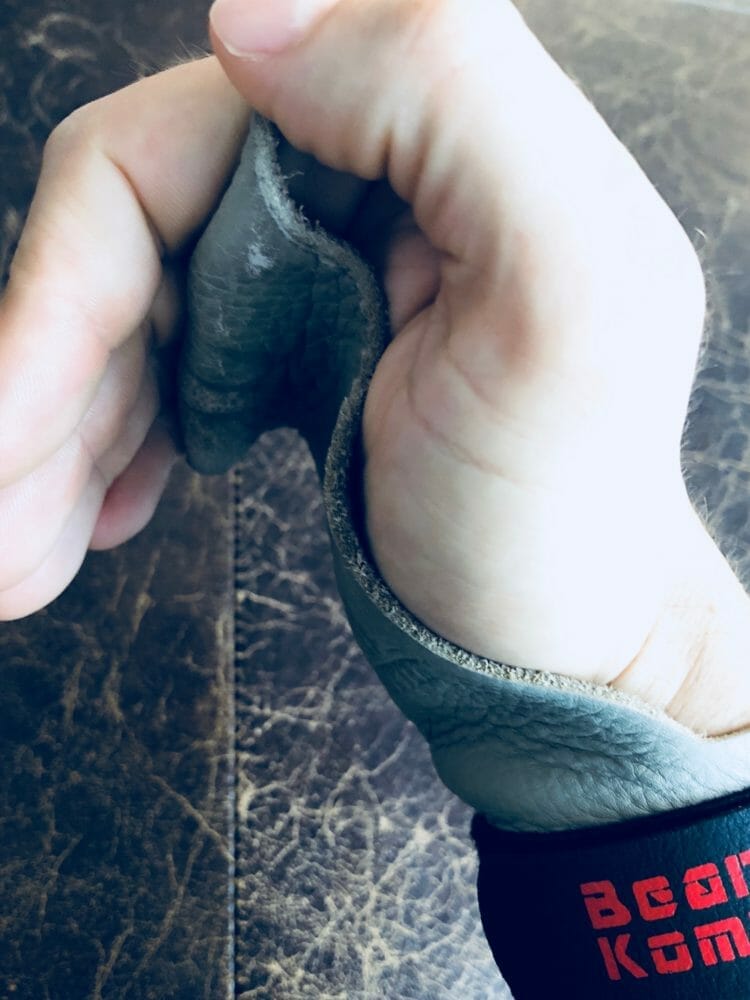
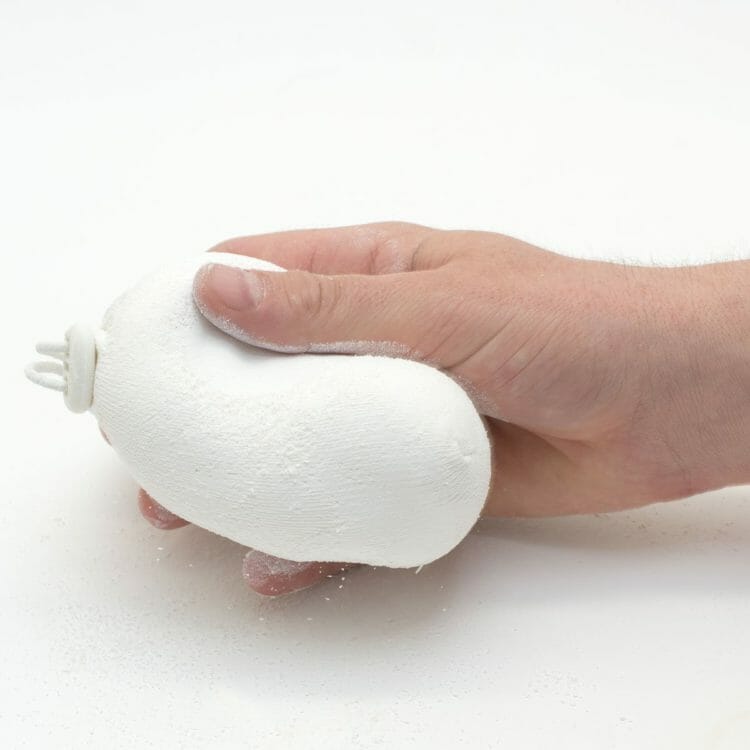
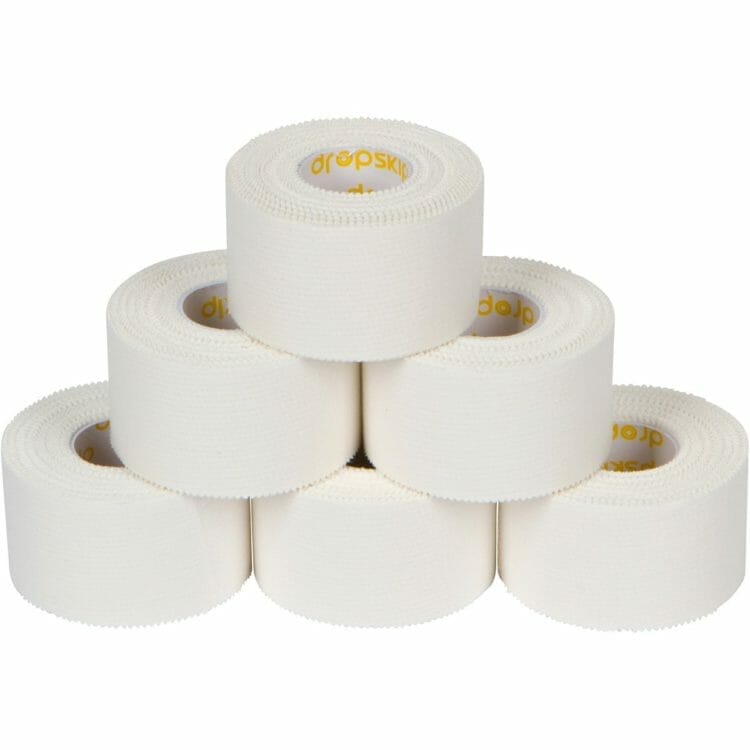
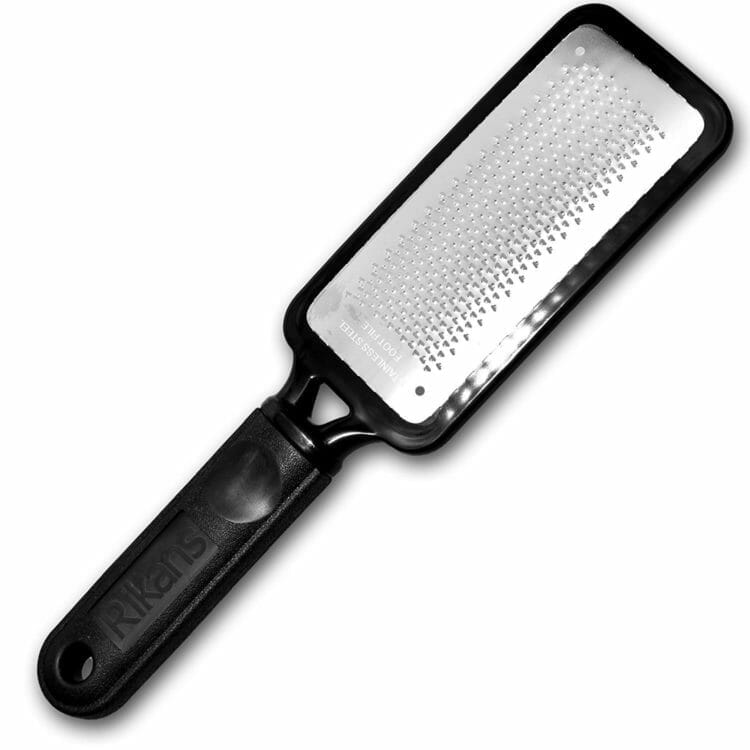
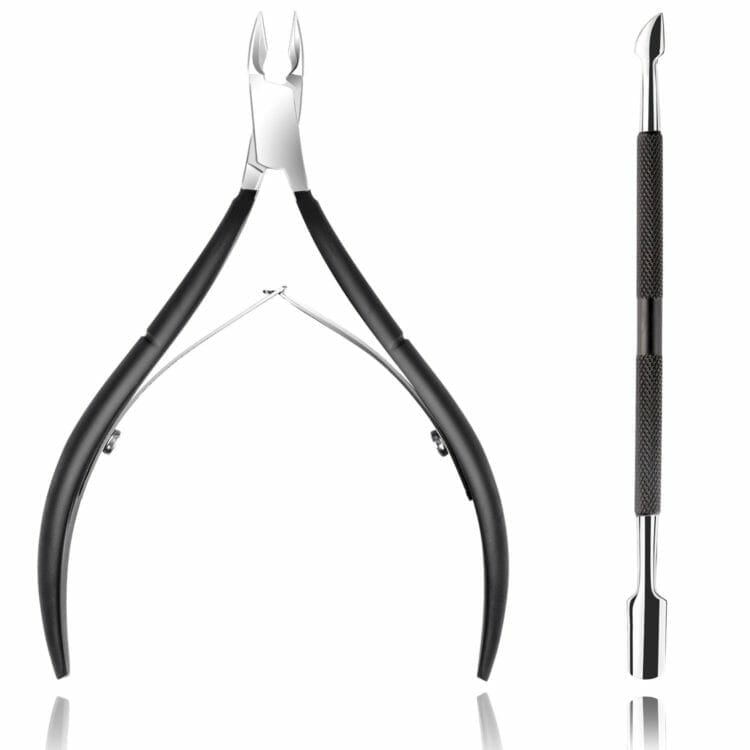

Thanks for the excellent review. I use a glass nail file (a byproduct of the Bohemian glass industry) for hard skin (and nails). The smaller sizes are perfect for hands. The extra large sizes for feet. Easy to sterilise and long lasting (just don’t drop on a hard surface).
This was a very detailed and through overview of all types of grips. This article has covered pretty much every thing one needs to know, including which types of grips work on which exercises.
I am trying to move away from chalk due to all the mess they make, and the need to keep reapplying them. These days in our CrossFit gym we are required to clean all the equipment after the workout, and use of chalk makes this cleaning even more time consuming. I bought a pair of leather grips on Amazon which has built-in write support. It has proven to be a woderful alternative to chalk, provides good write support and grip as needed. It doesn’t have holes for fingers, so I can switch between using its leather grip part depnding on my level of fatigue. I try to use no grip for the initial sets and then as things get heavier and I get fatigued, I use the leather part to grip the weight, barbell or bar. I prefer to not have calluses after a heavy weight workout. So far these grips are proving to be wonderful.
Hey Zeeshan!
I recently switched to Victory Grips Tactical — they work awesome without chalk on bare steel bars. See https://michaelkummer.com/fitness/victory-grips-review/
Cheers,
Michael
Thanks for sharing your experiences. I am looking into purchasing one of the bare hands or bearkomplex gloves soon so you’re review was very helpful!
This is really very informative post for me. Thanks for sharing of this post.
Great article. Thanks man!